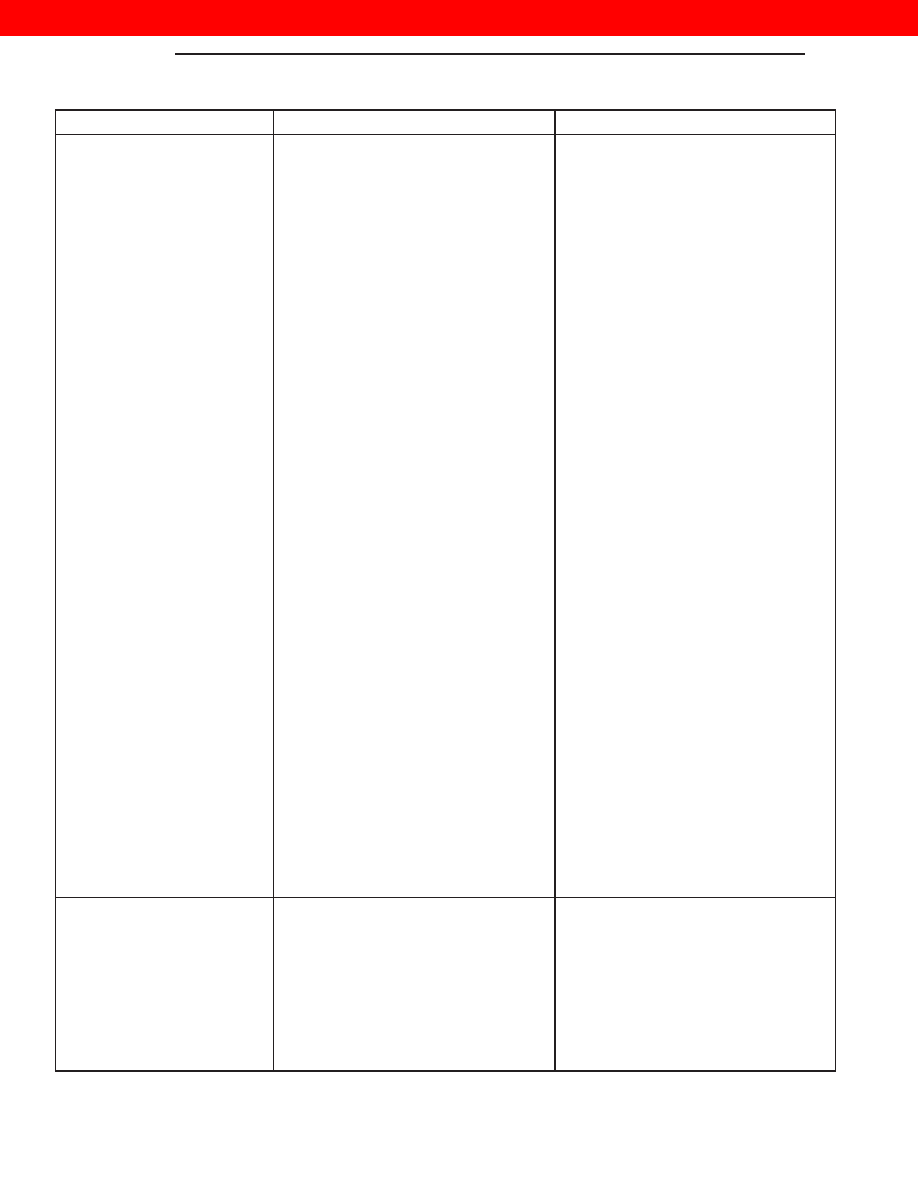Jeep XJ. Manual - part 315

CONDITION
POSSIBLE CAUSES
CORRECTION
COOLANT TEMPERATURE
ABOVE NORMAL
1. Low coolant level.
1. Check coolant level. Add coolant, if
necessary. Locate and correct the
source of the coolant loss, (refer to
Group 7, Cooling).
2. Incorrect/improperly operating
pressure cap.
2. Replace cap with the correct rating
for the system.
3. Loose drive belt on water pump/fan.
3. Check/replace belt or belt tensioner.
4. Inadequate air flow to the radiator.
4. Check/repair radiator core, fan
shroud and viscous fan drive as
required.
5. Radiator fins plugged.
5. Blow debris from fins.
6. Collapsed radiator hose.
6. Replace the hose. Check coolant
tank cap operation, (refer to Group 7,
Cooling Tanks).
7. Improperly operating temperature
sensor/gauge.
7. Verify that the gauge and
temperature sensor are accurate.
Replace gauge/sensor, if bad.
8. Improperly operating, incorrect or no
thermostat.
8. check and replace the thermostat.
9. Air in the cooling system.
9. (A) make sure the fill rate is not
being exceeded and the correct vented
thermostat is installed.
(B) Check for loose hose clamps.
Tighten if loose.
(C) If aeration continued, check for a
compresssion leak through the head
gasket.
10. Inoperative water pump.
10. Check and replace the water pump.
11. Incorrect injection pump timing.
11. Verify pump timing marks are
aligned. Check/time the injector pump
(refer to Group 14, Fuel System).
12. Overfueled injection pump.
12. Repair or replace the injection
pump.
13. Plugged cooling passages in
radiator, head, head gasket or block.
13. Flush the system and fill with clean
coolant.
14. Engine overloaded.
14. Verify that the engine load rating is
not being exceeded.
COOLANT TEMPERATURE
BELOW NORMAL
1. Too much air flow across the
radiator.
1. Check/repair viscous fan drive as
required.
2. Incorrect thermostat or
contamination in thermostat.
2. Check and replace thermostat.
3. Temperature sensor or gauge
inoperative.
3. Verify that the gauge and sensor are
accurate. If not, replace gauge/sensor.
4. Coolant not flowing by temperature
sensor.
4. Check and clean coolant passages.
9 - 8
ENGINE
XJ
DIAGNOSIS AND TESTING (Continued)
2000 JEEP CHEROKEE